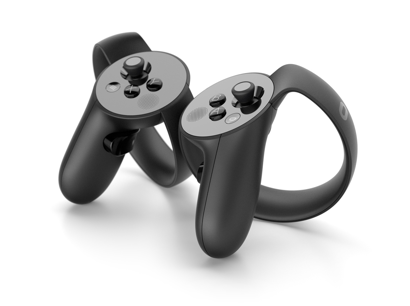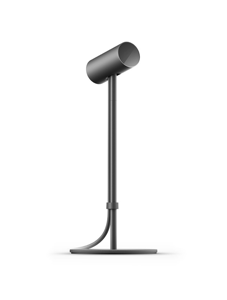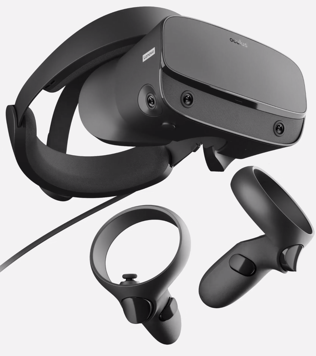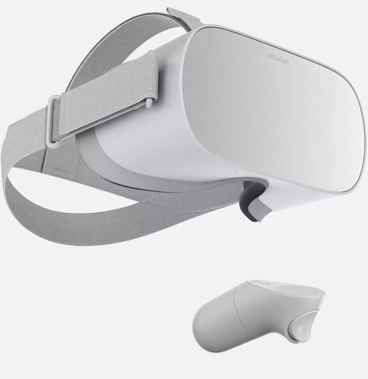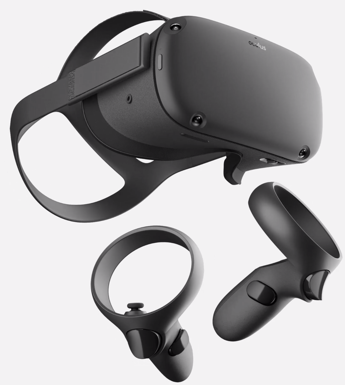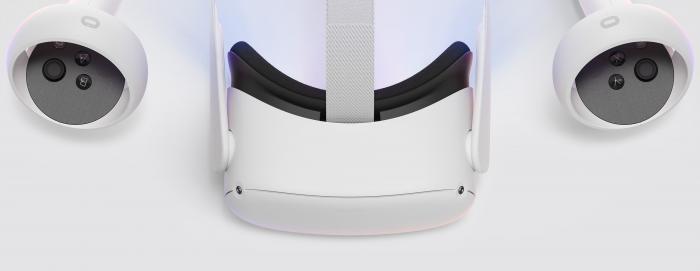Oculus Rift
It is fair to say that the current hype around VR has been dramatically spurred by Oculus and the fact that a little startup company after only two years got purchased by Facebook for two billion dollars (see Mark Zuckerberg's announcement).
Oculus started with a then teenager, Palmer Luckey, who was building VR prototypes in his garage (are not all stories like this starting in garages)? Luckey sent one of his prototypes, the PR6 that he called the Rift, to famous game designer John Carmack (Doom, Quake, founder of id Software). Carmack a little later would demo the Rift at an E3 event where it created a lot of traction. Luckey teamed up with Brendan Iribe, Michael Antonov, and Nate Mitchell, and together they launched a Kickstarter Campaign, that raised not the anticipated $250K but over 2 million dollars (for more details see "How Palmer Luckey Created Oculus Rift".
From there on it was a wild ride. The biggest change for the young company came when Facebook in 2014 bought it for two billion dollars. Had VR, even up until March 2014 created some hype and fantasies, at this point it had everyone’s attention.
After two developer versions, the consumer version started shipping in the Spring of 2016! Below is a figure that shows the transition from DK1 to the consumer version. The latter offers an OLED display, a resolution of 2160 x 1200, a 90 Hz refresh rate, a 110-degree field of view, and a tracking field of up to 5 x 11 feet. The Oculus Touch controllers have not yet been released. If you want to run an Oculus on your computer the recommended minimum specs are an NVIDIA GTX 970 / AMD 290 equivalent or greater, Intel i5-4590 equivalent or greater, 8GB+ RAM, Compatible HDMI 1.3 video output, 2x USB 3.0 ports, Windows 7 SP1 or newer.
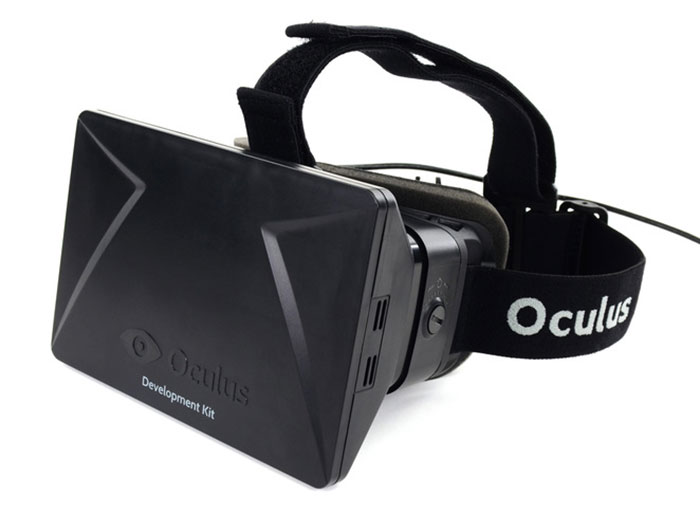
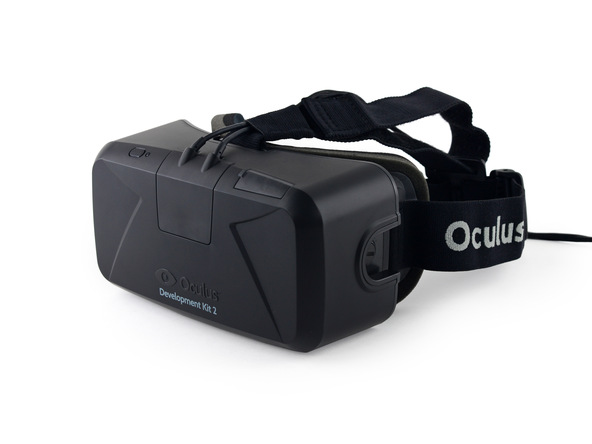
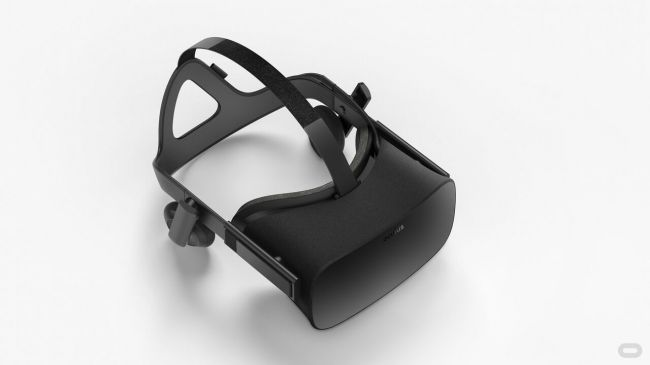
The latest versions of Oculus Rift can be used with either a remote controller or a more complicated
input modality such as Oculus Touch.
While the remote is rather limited as an interaction modality (only a few buttons), Oculus Touch provides a wide variety of interaction possibilities (e.g., finger tracking, gesture recognition) and a larger set of buttons on each controller.
Moreover, by default two Oculus sensors are used to track and translate the movements of users (head movements based on the VR headset and hand movements based on the Touch controllers) in VR. This technology provides a 6-DOF (degrees of freedom) (3-axis rotational tracking + 3-axis positional tracking) tracking.
On March 20th, 2019 Oculus announced a new model to the Rift family called Oculus Rift S. The new member of the Rift family uses a Fast-switch LCD display with a resolution of 2560×1440 (1280×1440 per eye) with a refresh rate of 80 Hz. It utilizes a new technology called “inside-out tracking” using five cameras embedded into the headset, which eliminates the need for external sensors for tracking while maintaining a 6-DOF tracking. In short, the headset itself can track and translate the movements of itself and the controllers, which allows the users to freely move around a physical environment without restrictions. If you want to use an Oculus Rift S on your computer the recommended specs are an NVIDIA GTX 1060 / AMD Radeon RX 480 or greater graphics card, Intel i5-4590 / AMD Ryzen 5 1500X or greater, 8GB+ RAM, DisplayPortTM 1.2 / Mini DisplayPort, 1x USB 3.0 ports, and Windows 10.
Since the emergence of cost-effective VR HMDs developers and users have always been restricted to limited mobility options due to the requirements for these HMDs to be connected to powerful computers via cables (i.e. tethered).
On October 11th, 2017 a new generation of Oculus HDMs called “Oculus Go” was announced and later on May 1st, 2018 released to the public. Go is described as an untethered all-in-one headset meaning that it can function as an independent device without the need to be connected to a computer. Evidently, the first generation of these untethered all-in-one headsets was not as powerful as their predecessors in terms of computing power. Oculus Go utilizes a Snapdragon 821 SoC processor and is powered by a 2600 mAh battery, 5.5" fast-switching LCD with a resolution of 2560×1440 (1280×1440 per eye) and refresh rate of 72 Hz, Adreno 530 internal graphics card, with non-positional 3-DOF tracking due to the lack of sensor use. Unlike the Rift, Go does not use rich controllers such as “Touch” but instead, uses a simple remote controller with limits interaction possibilities. On December 4th of 2020, Oculus discontinued the Go HMD and officially replaced it with the next generation, Quest.
On May 21th, 2019, Oculus released a new breed of untethered all-in-one headsets called Oculus Quest. This HMD brings the best features of Rift and Go together in one. Similar to Go, it is an all-in-one standalone headset, and similar to the Rift it uses inside-out-tracking with 6-DOF. Furthermore, it utilizes a more powerful GPU and processor (4 Kryo 280 Gold processor with 4GB RAM, and an Adreno 540 graphics card), capable of running high-quality applications. It has a PenTile OLED display with a resolution of 1440 × 1600 per eye, and a refresh rate of 72 Hz. Furthermore, unlike the other untethered Oculus product Go, Quest uses the latest version of touch controllers.
On October 13th, 2020, Oculus released the new generation of Quest, called Quest 2. This new generation of the Quest HMD has superior specifications in the processor (Qualcomm Snapdragon XR2), RAM (6 GB), and display resolution (1832 x 1920 per eye) and starts at a very competitive price of $299.

